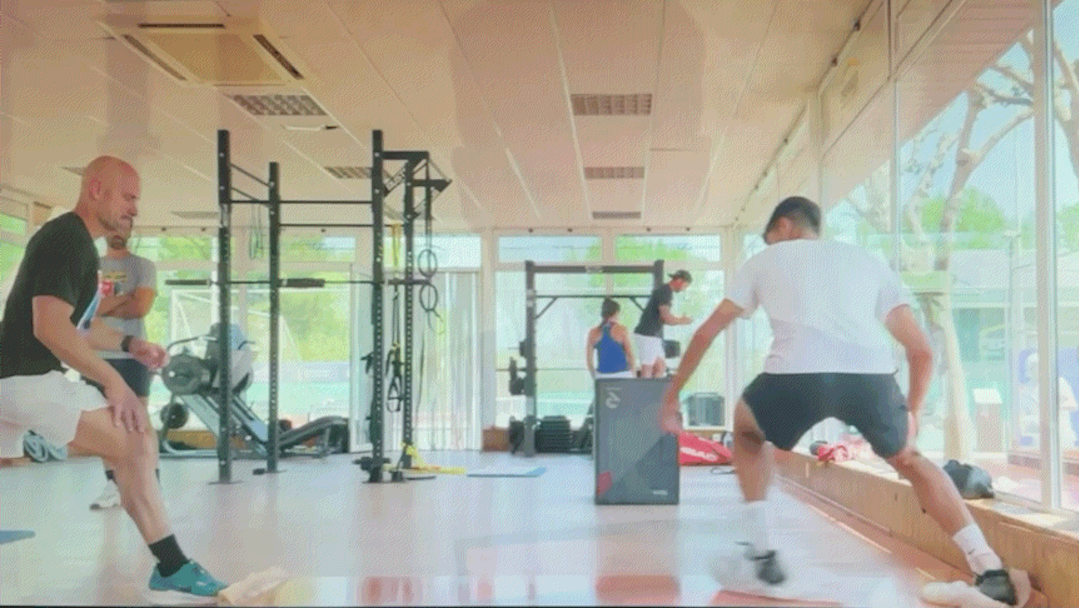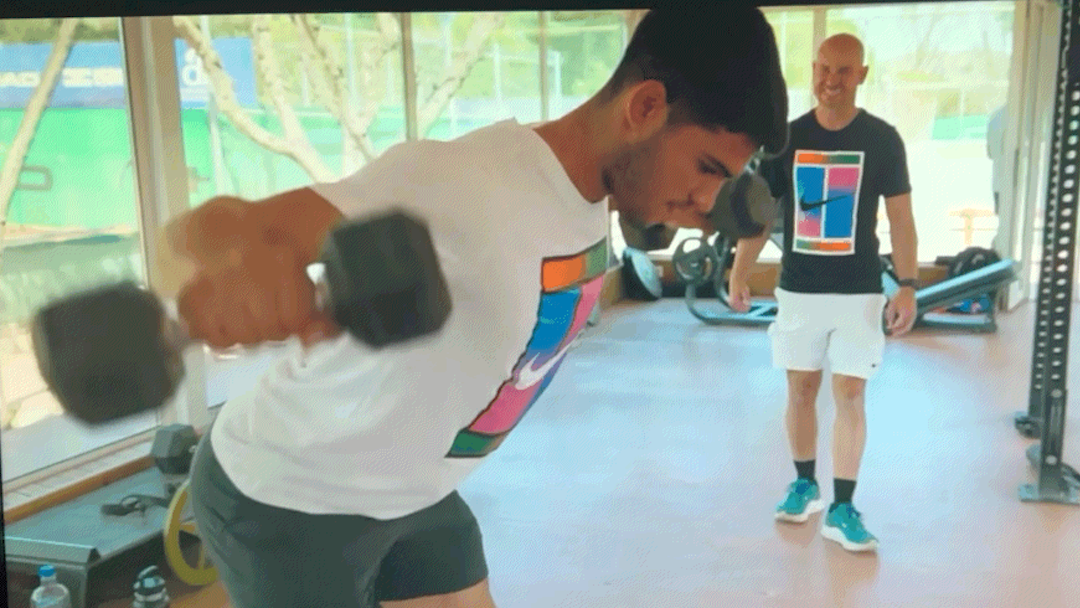Superbands are popular with tennis players because they are ideal for muscle activation, strength training, and rehabilitation. They are also compact and lightweight, which means they can be easily stowed in a racquet bag. Not surprisingly, superbands have been a recurring piece of exercise equipment when I write about tennis training each Tuesday.
Many of the superband posts have come with disclaimers of safety. For example, “A Resistance Band Face Pull” speculated that a modification Ons Jabeur made to that exercise was to reduce the risk of eye injury should the band snap. In fact, movements that pull a superband directly toward the face should be avoided. That precaution isn’t just about following the instructions—it’s about protecting yourself from the potential hazards of a snapped band, which can cause serious injury.
Three weeks ago, I had a superband snap while using it for resistance run sprints. The force and sound when the broken end struck the far wall made me fully appreciate how dangerous superbands can be. It was the first time I had ever had a band rupture. Since it was a relatively new band, I assumed it was probably a manufacturing defect. It was a wake-up call to examine my other bands for signs of similar issues. There were none, so I dismissed the incident as a freak event.
One week later, I had a second superband snap on me while performing resistance sprints. Once again, the impact on the far wall reminded me that a ruptured superband can cause significant harm. This time, it was a band that I had owned for a long time. However, I did not inspect it before using it in that training session.
Safety is important. After experiencing two snapped superbands in as many weeks, I’ve become more diligent about inspecting my equipment before every use. Even the most durable bands can degrade over time or harbor hidden flaws, and a few extra moments spent checking for cracks, fraying, or other signs of wear is a small price to pay for avoiding potential injury. These incidents also prompted me to reconsider using non-sheathed bands for resistive sprints—a practice that suddenly feels riskier in light of my recent experiences.
For tennis players, superbands enhance muscle activation, build strength, and aid rehabilitation. Their versatility and portability make them a must-have for anyone looking to elevate their game. Consequently, I will continue to use superbands. However, I’m slightly embarrassed that it took not one but two “wake-up calls” to inspire me to improve my safety inspections. I think I have finally learned the lesson.
Fiend At Court participates in the Amazon associates program and receives a paid commission on any purchases made via the links in this article. Details on the disposition of proceeds are available on the “About Fiend at Court” page.



